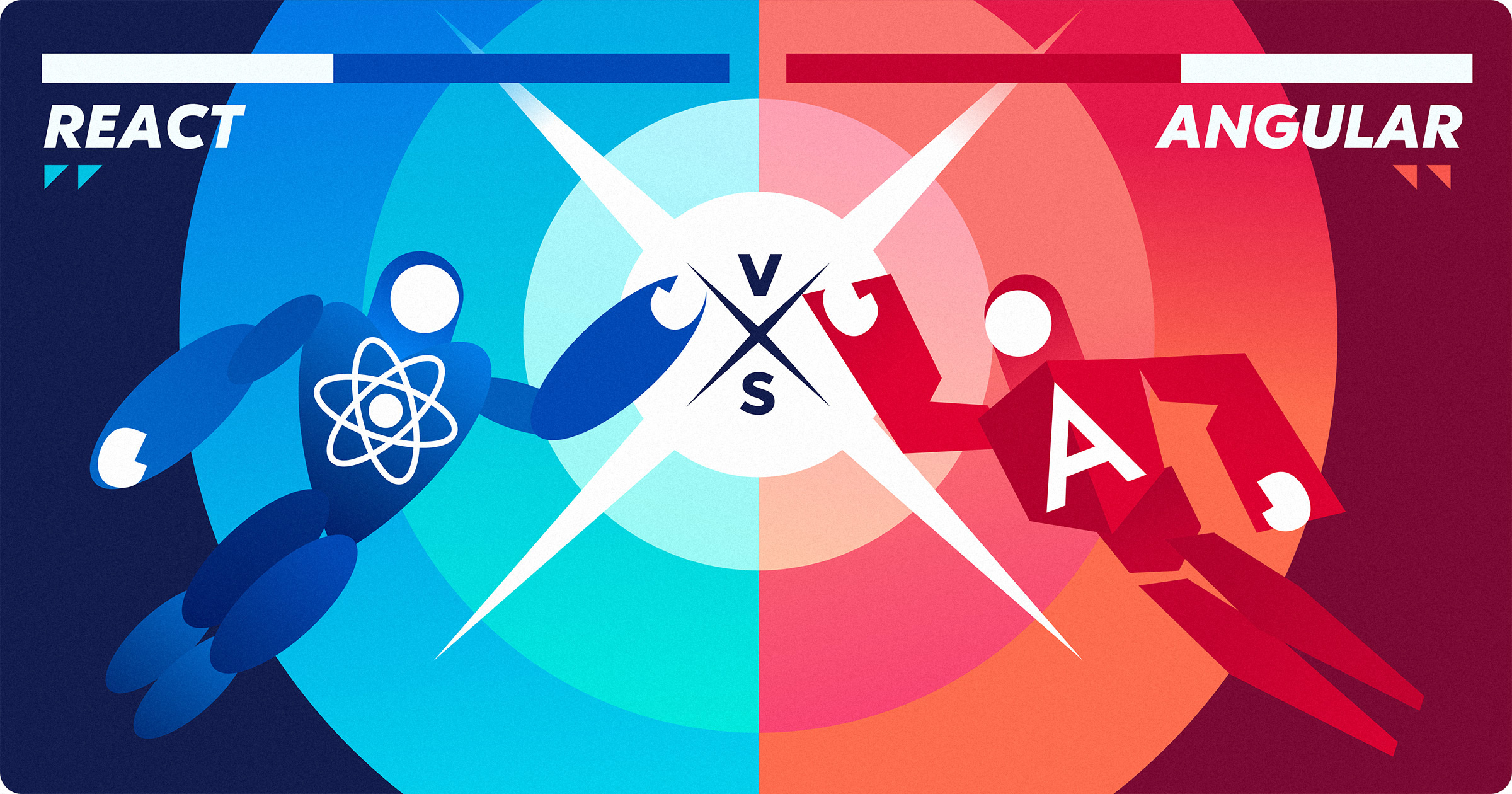Introduction: In the vibrant world of web development, two heavyweight champions step into the ring: React and Angular. These two JavaScript frameworks have been duking it out for years, each with its own legion of fans and dedicated followers. But what exactly sets them apart? Which one reigns supreme? Let's dive in and explore the similarities, differences, and quirks of React and Angular, and maybe, just maybe, we'll uncover which one is the ultimate champ.
The Tale of React: First up, we have React, the beloved brainchild of Facebook. React burst onto the scene with its declarative and component-based architecture, making it a favorite among developers who love its simplicity and flexibility. With React, you can create reusable UI components that make building interactive user interfaces a breeze. It's like having a trusty toolbox filled with all the widgets and gadgets you need to craft stunning web applications.
React's claim to fame lies in its virtual DOM, a nifty feature that helps optimize performance by only updating the parts of the DOM that have changed. This means faster rendering times and smoother user experiences, which is always a win in the fast-paced world of the web.
But React isn't without its quirks. Its unopinionated nature can be both a blessing and a curse, as it leaves developers with a wide array of choices when it comes to state management, routing, and other crucial aspects of app development. This flexibility can sometimes lead to decision paralysis, especially for beginners navigating the vast React ecosystem.
The Epic Saga of Angular: Next, we have Angular, the brainchild of Google. Angular takes a different approach compared to React, offering a more opinionated and comprehensive framework for building web applications. With Angular, everything is included right out of the box, from powerful data binding and dependency injection to robust tooling and testing utilities.
One of Angular's standout features is its two-way data binding, which allows for seamless synchronization between the model and the view. This means that any changes to the model are instantly reflected in the UI, and vice versa, making for a highly reactive and dynamic user experience.
Angular also comes equipped with a built-in router, form handling, and HTTP client, streamlining the development process and reducing the need for third-party libraries. This can be a major boon for developers looking for an all-in-one solution without having to cobble together various dependencies.
However, Angular's steep learning curve and rigid conventions can be daunting for newcomers. Its opinionated nature means that developers must adhere to the "Angular Way" of doing things, which can sometimes feel restrictive for those accustomed to the freedom of other frameworks.
The Verdict: So, where does that leave us in the great React vs. Angular debate? Well, it ultimately comes down to personal preference and project requirements. React excels in its simplicity and flexibility, making it a favorite among developers who value freedom and choice. On the other hand, Angular offers a comprehensive and opinionated framework that appeals to those who prefer structure and guidance.
In the end, both React and Angular have their strengths and weaknesses, and there's no one-size-fits-all solution. Whether you're a seasoned veteran or a fledgling developer just dipping your toes into the world of web development, it's worth exploring both frameworks to see which one resonates with you and your project goals.
So, let the friendly rivalry between React and Angular continue, as developers around the world harness the power of these frameworks to build the web applications of tomorrow. After all, in the ever-evolving landscape of technology, there's always room for innovation and friendly competition.
